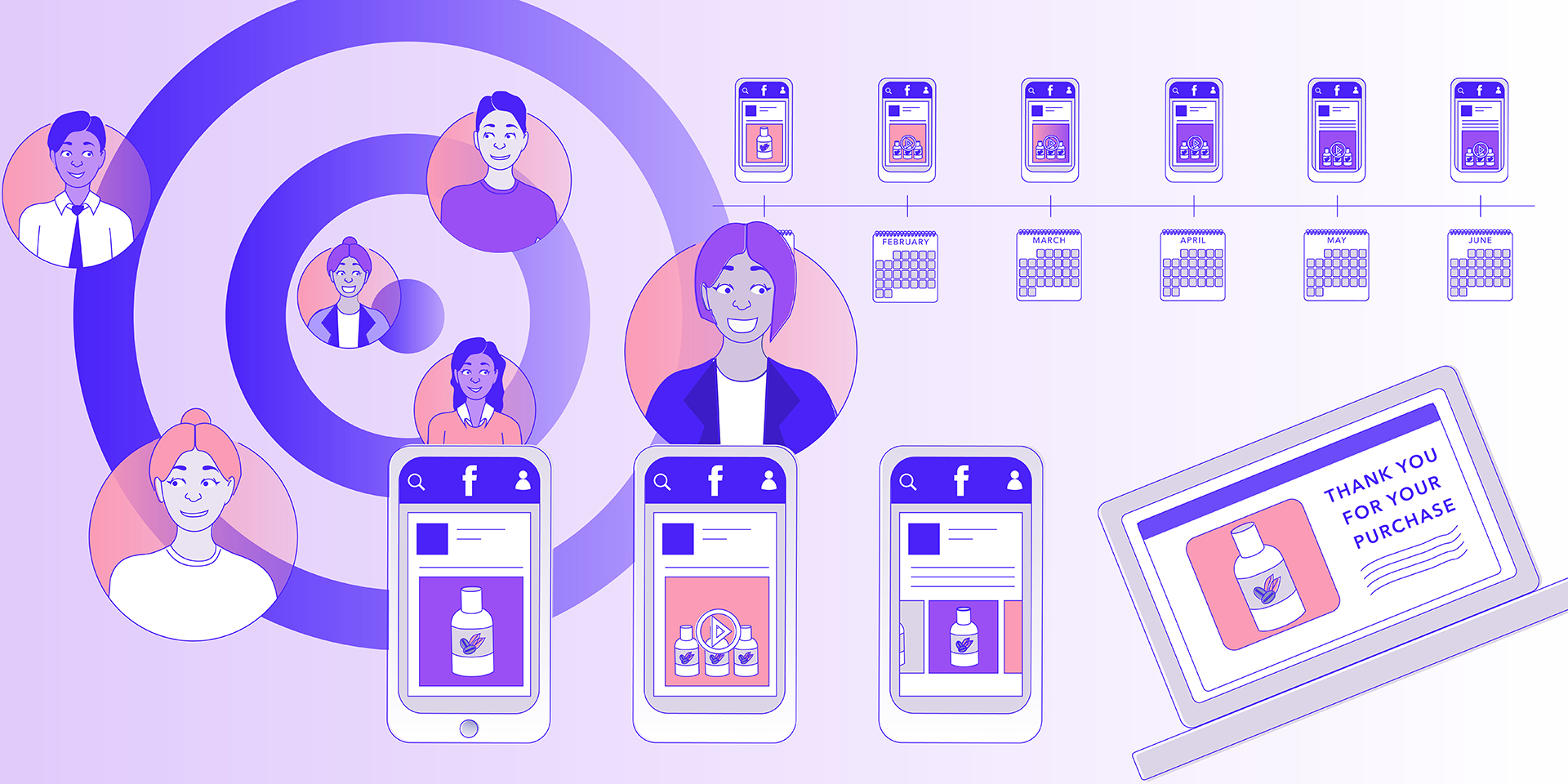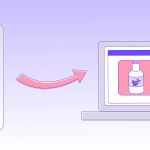
The Essential Elements Of Facebook Advertising
There are more than one billion people active on Facebook and 100 million people active on Instagram. Your brand doesn’t have to touch that many customers to be incredibly successful. Because of the sheer enormity of the social media platforms and their perhaps unparalleled abilities to showcase highly visual beauty products, the allure of advertising on them undeniable. But brands that eagerly pounce on Facebook and Instagram ads without clear strategies may wind up throwing cash at losing efforts. “If you are not doing it right or don’t have somebody who knows what they are doing, it will be a waste of money,” contends Molly Beane, founder of From Molly With Love. However, brands that land on winning tactics find Facebook advertising can be extremely lucrative. “This is a huge opportunity to acquire customers and quality customers that you can retain who are going to buy and replenish,” says co-founder Divya Gugnani, co-founder of Wander Beauty. “It’s a very important marketing channel for anybody who wants to build direct-to-consumer brand.” Beauty Independent chatted with Beane, Gugnani, other brand founders and social media advertising experts for tips on what to bear in mind when embarking on Facebook and Instagram campaigns.
- Consider the ends as well as the means
- For small brands, launching Facebook advertising can seem like diving into the world’s largest digital pool and trying to locate a single bitcoin. It’s definitely an important step just to start advertising on the platform, but Megan Jones, senior director at January Digital, cautions against making that a goal in and of itself. “What do you want to accomplish by advertising on Facebook? You can focus on leads, revenue or awareness, and set your campaign accordingly,” she says. Jones points to email address capture as a beneficial objective of Facebook ads. “Email is really one of the most powerful factors because it really is the strongest form of marketing in digital,” she says. “If you can get people on your email list for a cost per lead of $2 on Facebook, that’s going to be well worth it from a lifetime value perspective.” Mike Reichman, vice president of growth strategy at Mason Interactive, suggests young brands should concentrate on brand awareness and visibility at the outset. To Facebook, the metrics associated with brand awareness are reach, ad recall lift, and engagement or comments, shares and likes, and the platform estimates results for those metrics. Not all emerging brands believe brand awareness is the best aim for Facebook campaigns. Bee Shapiro, founder of Ellis Brooklyn, hones in on sales to measure Facebook and Instagram advertising ROI. “Brand awareness is really hard to calculate. What’s brand awareness? I don’t know,” she muses. While she centers on sales, Shapiro asserts they’re difficult to generate through Facebook and Instagram ads for a brand in its infancy, especially a prestige brand. Two years ago, an upstart Ellis Brooklyn didn’t achieve meaningful ROI on its ads and suspended them. “I don’t want to spend $100 on something I don’t know even if it has free shipping and returns,” speculates Shapiro about why ads from newcomers don’t perform. Today, with the brand available at Credo, Barneys New York, Net-a-Porter, The Webster, Knockout Beauty and more stores, its ads yield significant ROI. When Wander Beauty kicked off Facebook ads earlier this year, Gugnani set an objective for web orders per day. “We reached that goal very quickly. Then, I got greedy and wanted to do 10 times that,” she shares, divulging, “We are now selling more than double the volume of what we sell in all of Sephora on our own site.” In evaluating the purposes of their campaigns, Jones emphasizes brands should make sure those purposes match their capabilities. For example, a brand shouldn’t strive to capture email addresses if they don’t have the capacity to leverage those addresses with email marketing.
- Get to know your target audience
- Brands should pinpoint an audience that can help them meet their goal. If the goal is sales, reaching consumers most probable to purchase is paramount. “Really start by tackling the low-hanging fruit. That’s the people who already know you and have shown interest in you or like you,” says Jones. “Those people are the cheapest. They are at the very bottom of the marketing funnel. They are going to respond at a much higher rate, which creates better efficiency.” If the goal is to expand the customer base, Sandra Rand, vice president of marketing at OrionOKB, advises brands to use a lookalike target audience. Facebook generates lookalike audiences that are similar to audiences a brand currently has and values. Rand elucidates, “You take your list of the 250 lifetime value customers — people that spend money frequently ‚— and you can build lookalike audiences with similar characteristics.” She elaborates, “A brand that wants easy wins can develop a 1% lookalike. Lookalikes go from 1% to 10%. A 1% lookalike is people who essentially look like your audience.” Facebook allows brands to zero in on audiences with staggering specificity. “You can drill down on soccer moms, moms of toddlers, empty-nester moms, moms that are sustainable and green,” notes Rand. “In beauty, the audience can be broken down between people who shop at drugstores or department stores.” Specificity can be handy if a brand is trying to persuade a certain demographic of customers to visit a select department store in an individual city. Casting a wider net can be helpful, too, particularly for brands that have sizable advertising budgets. Wander Beauty experiments with many targets. “We’ve realized that the best strategy is not to hone in on one audience, but to do broad prospecting and test different content on different audiences,” says Gugnani. “One could be people over 50 interested in beauty that live in these areas and another could be career professionals in those areas. It’s about marrying the piece of content to an audience, and seeing if it clicks.”
- What ads to serve up
- Jones doesn’t think brands have to spend blockbuster budgets on their Facebook ads. “Utilize your internal team and repurpose material you already have. Also, really leverage your organic social. What works in organic social for you? Is it every time you feature a specific eyeshadow? Don’t be afraid to silo yourself,” she says. “Definitely, use what works for you.” Reichman stresses brands should identify their value proposition to guide ad content. “Turn that value proposition into a call to action across any creative whether it’s a digital activation like canvas ads on Facebook or video ads on Instagram,” he says. Target audiences, of course, play roles in creative development as well. If a brand is going after new audiences, Rand says a good idea might be a carousel ad with images of several bestsellers to familiarize potential customers with its offerings. No matter the creative, it’s crucial to have at least four or five versions of it to serve as comparisons. “We have four pieces of creative we are going to test, but we only test two at a time. We do an AB test and, when A is a clear winner, we roll out A versus C and, then, if A wins again, we roll out A versus D,” details Reichman. “It could be as simple as the color of lipstick or the color of the text or whether the button says shop now or buy now that we change.” Wander Beauty doesn’t skimp on the creative iterations. “We have hundreds of ads running and we monitor them carefully by the minute and the hour,” says Gugnani. The brand has discovered ads with how-to components and women that look like the intended audiences demonstrate results. “Diversity has been key for us because it resonates with different target groups,” says Gugnani. Overall, video ads appear to outperform ads with static imagery. “When I first started trying ads, they were pretty graphic. They were not necessarily dynamic. We have video ads running now and that has started to bring a lot more people in,” reveals Gayatri Pradhan, founder and CEO of Poéthique. “I don’t know if it is because people just ignore text ads and video catches their attention, but video has definitely worked better.” On Instagram, Jenny Wolfram, founder and CEO of BrandBastion, reminds brands to incorporate hashtags and prepare for engagement. “If a beauty brand is running ads, those ads will be getting comments. People will be posting to ask where they can get the products and asking about animal testing,” she relays. “Brands can really make an impact, drive more conversations and spread their messages by being active and responding to comments quickly.”
- The advertising commitment
- It’s possible to spend as little as a $1 a day on Facebook advertising, but that amount is unlikely to be awfully effective. Beane hired a consultant to handle her social media advertising initiative, and spent $800 to $1,000 a month plus $1,000 monthly to administer the ads. She introduced ads in March and pulled them in September. “To be really successful, it [the budget] should be a lot more than what I spent, but my funds were limited, and I paused the Facebook advertising because it stopped being profitable,” says Beane. Rand figures brands should be spending $500 to $1,000 a day — and that’s not merely for a few days. “The biggest things we see brands do is get cold feet because the first 48 hours of their campaigns aren’t performing the way they expected, but Facebook needs to find the right audiences for your ads, and they can’t do that immediately,” says Rand. Reichman encourages emerging brands to plan for six-month campaigns. “If you are just putting up one ad for one week and spending $100, that’s not an ad campaign. Maybe you will have some success, but, most of the time, your $100 is going to be gone fast,” he says. “You have to build a program.” At the inception of a campaign, a key concern is that brands don’t have understandings of their cost per acquisition (CPA). “New clients will ballpark it. They might have an idea of the average CPA for their competitors or they might be comfortable spending $50 because their average order is $85,” says Jones, adding, “They will need to spend six months to see what happens and find a comfortable or realistic CPA.” If campaigns are going well, CPA should decrease. As a campaign runs, Reichman says, “We are able to narrowly focus ad spend, have higher conversions and lower cost per acquisition.”








